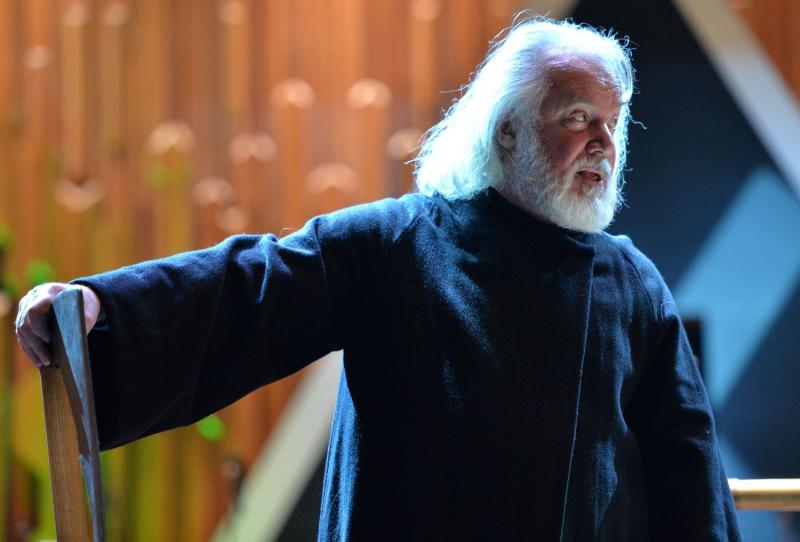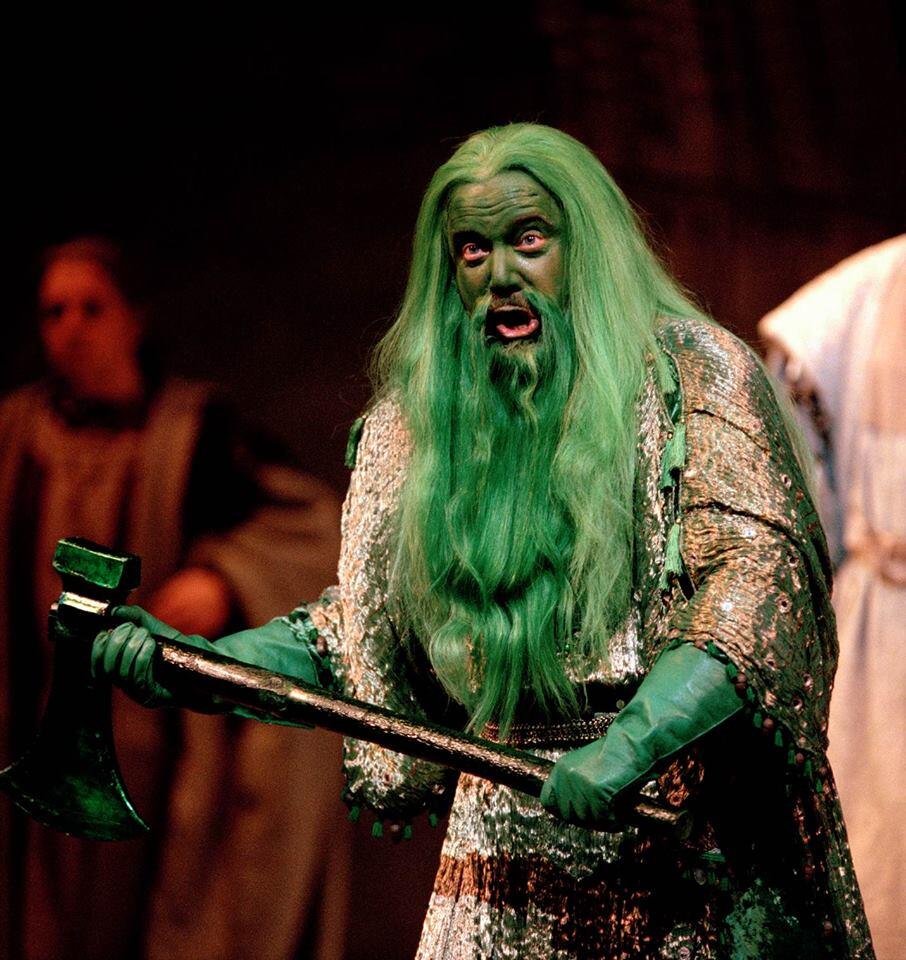Gawain, Barbican | reviews, news & interviews
Gawain, Barbican
Gawain, Barbican
Impressive work in perfect musical conditions but slightly muddled semi-staging

Part of the Birtwistle at 80 series at the Barbican, this not-quite-semi-staged Gawain ended up being held back a little by its shoestring production, where a straight concert performance might have transcended its limitations.
The music, however, in all its dark, unremitting intensity, was extremely well served by an extended BBCSO, conducted by Martyn Brabbins, and outstanding solists, including John Tomlinson returning magnificently to the role he first created over 20 years ago. Leigh Melrose (Gawain), Jeffrey Lloyd Roberts (King Arthur), Laura Aikin (Morgan Le Fay), and Jennifer Johnston (Lady de Hautdesert) were impressively undaunted by the difficult score, and ably supported by the rest of the cast: a veritable showcase of British talent.
John Lloyd Davies, who designed and directed, used lighting effectively to shift mood and create the sense of different spaces. Two large projection screens featuring digitally altered photographs for scene-setting (castle vaulting for the court, trees in silhouette for the journey, etc) might have been a neat addition if it hadn’t been for ye olde Celtic typeface used to announce the scenes, and occasionally comment cryptically and unhelpfully on the action. Other touches were much more potent, like the Green Knight’s first appearance, bathed in green light and smoke like all Arthur’s ghosts of Christmas come at once.
The turning of the seasons, the protracted coda to the first act, typified some of the problems. As each season passes, Gawain is given chain-link, helmet and sword; but the props budget only stretched to a sword, so they kept re-giving it to him. Then Gawain would join Arthur and Guinevere in a conga line and walk round in a circle - to turn the season, presumably, but the result, exacerbated by repetition and the tight space, was faintly comical. They could all have stood still instead.
 The text also remains patchy, with lines – some oft-repeated – misstepping the line between allusive and just elusive. What does “This is the hour of vanity or choice” actually mean? With such rich source material, it is eyebrow raising to hear fortune cookie aphorisms like “Tomorrow will stumble on yesterday’s promise, cancelling everything”.
The text also remains patchy, with lines – some oft-repeated – misstepping the line between allusive and just elusive. What does “This is the hour of vanity or choice” actually mean? With such rich source material, it is eyebrow raising to hear fortune cookie aphorisms like “Tomorrow will stumble on yesterday’s promise, cancelling everything”.
There was much in the programme notes about the theatricality of Birtwistle’s conception, but the organisation is better understood as architectural. The ritual element of this Gawain, reflected in blocks of music, with the plot constantly turning in on itself – the seasons, Gawain being kitted out with armour, helmet and sword, the three hunts/kisses, etc – brings to mind the solidity in repetition of cathedral buttresses more than a concern for dramatic momentum. The tension is constant, ulcer inducing – you long for a shard of light to pierce through the cloud, but there are only occasional waves of bigger, louder tension.
In the 1994 Covent Garden production (pictured above), the opera was the first outing of the short-lived Hecklers, but there was no such dissent at the Barbican, the composer’s arrival on stage being greeted with a standing ovation. Well-deserved too, for what remains an impressive achievement.
The future of Arts Journalism
You can stop theartsdesk.com closing!
We urgently need financing to survive. Our fundraising drive has thus far raised £49,000 but we need to reach £100,000 or we will be forced to close. Please contribute here: https://gofund.me/c3f6033d
And if you can forward this information to anyone who might assist, we’d be grateful.

Subscribe to theartsdesk.com
Thank you for continuing to read our work on theartsdesk.com. For unlimited access to every article in its entirety, including our archive of more than 15,000 pieces, we're asking for £5 per month or £40 per year. We feel it's a very good deal, and hope you do too.
To take a subscription now simply click here.
And if you're looking for that extra gift for a friend or family member, why not treat them to a theartsdesk.com gift subscription?

Add comment